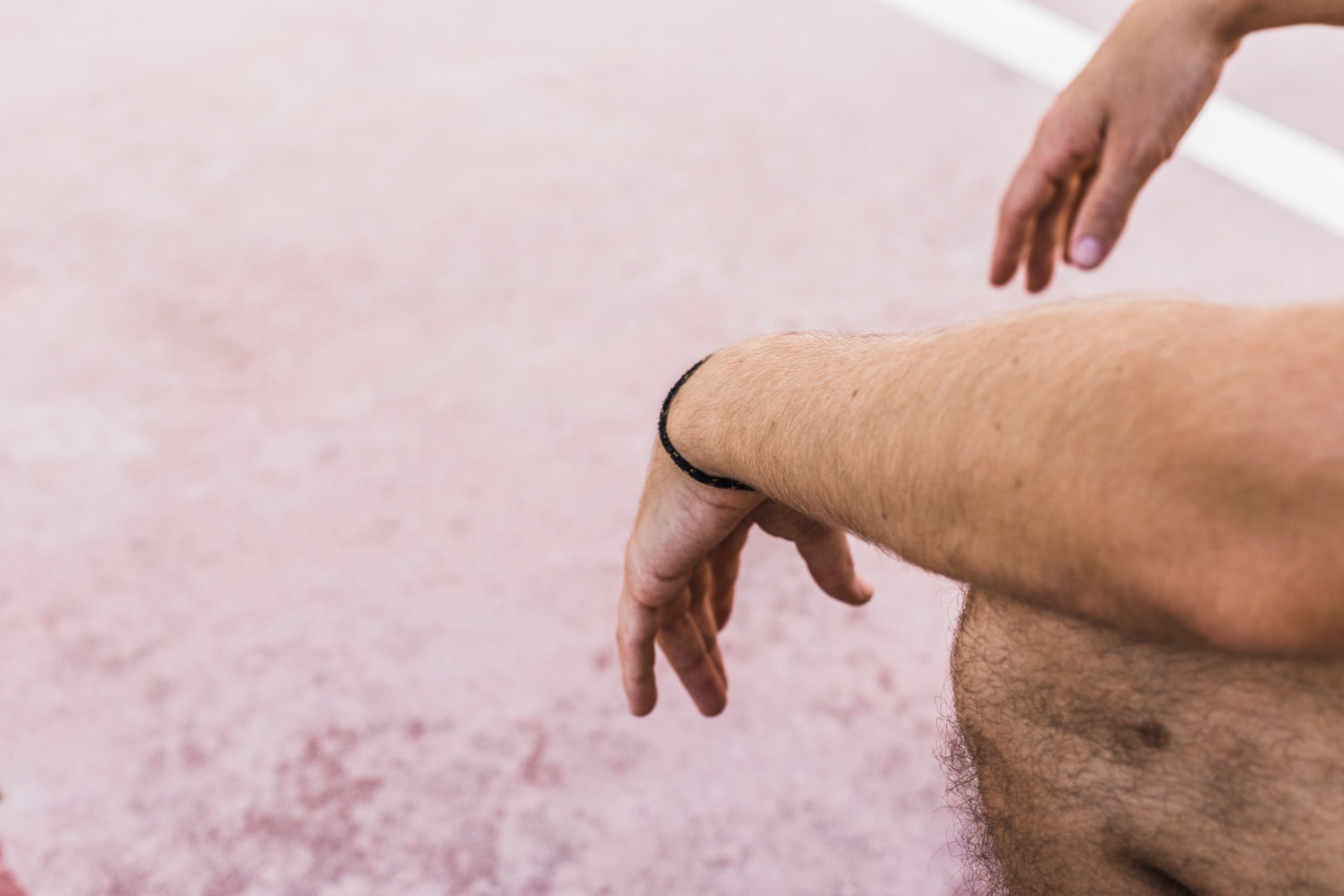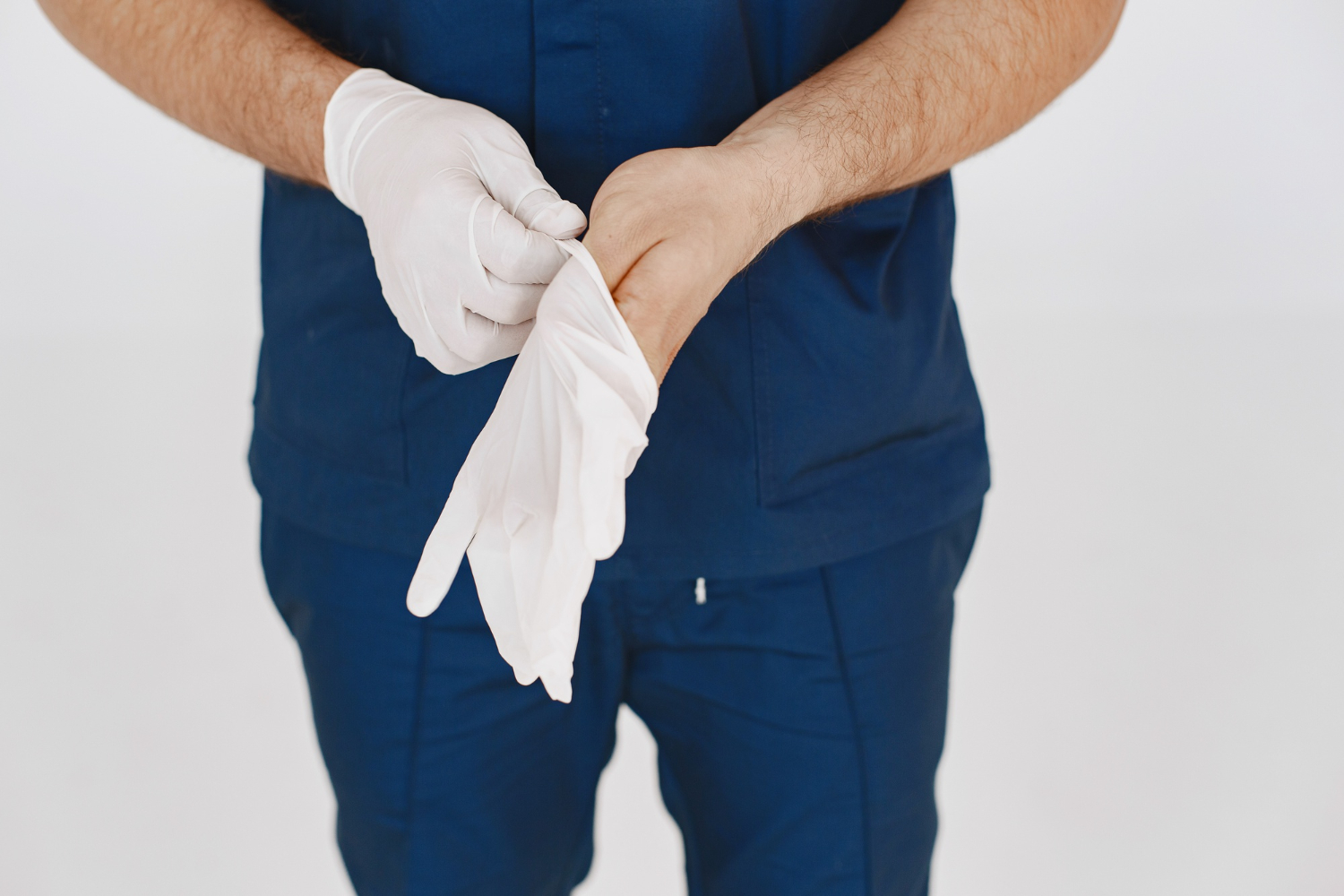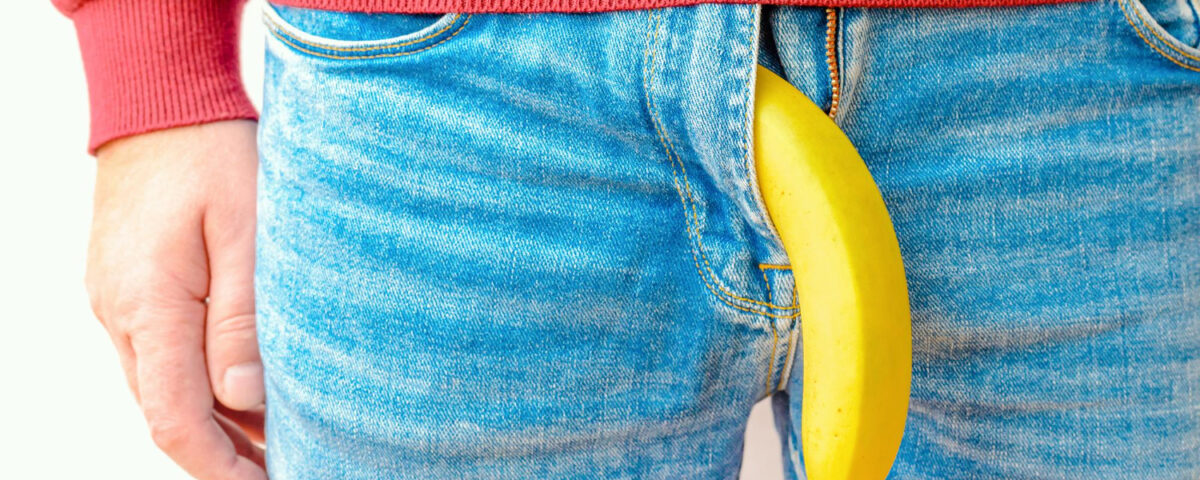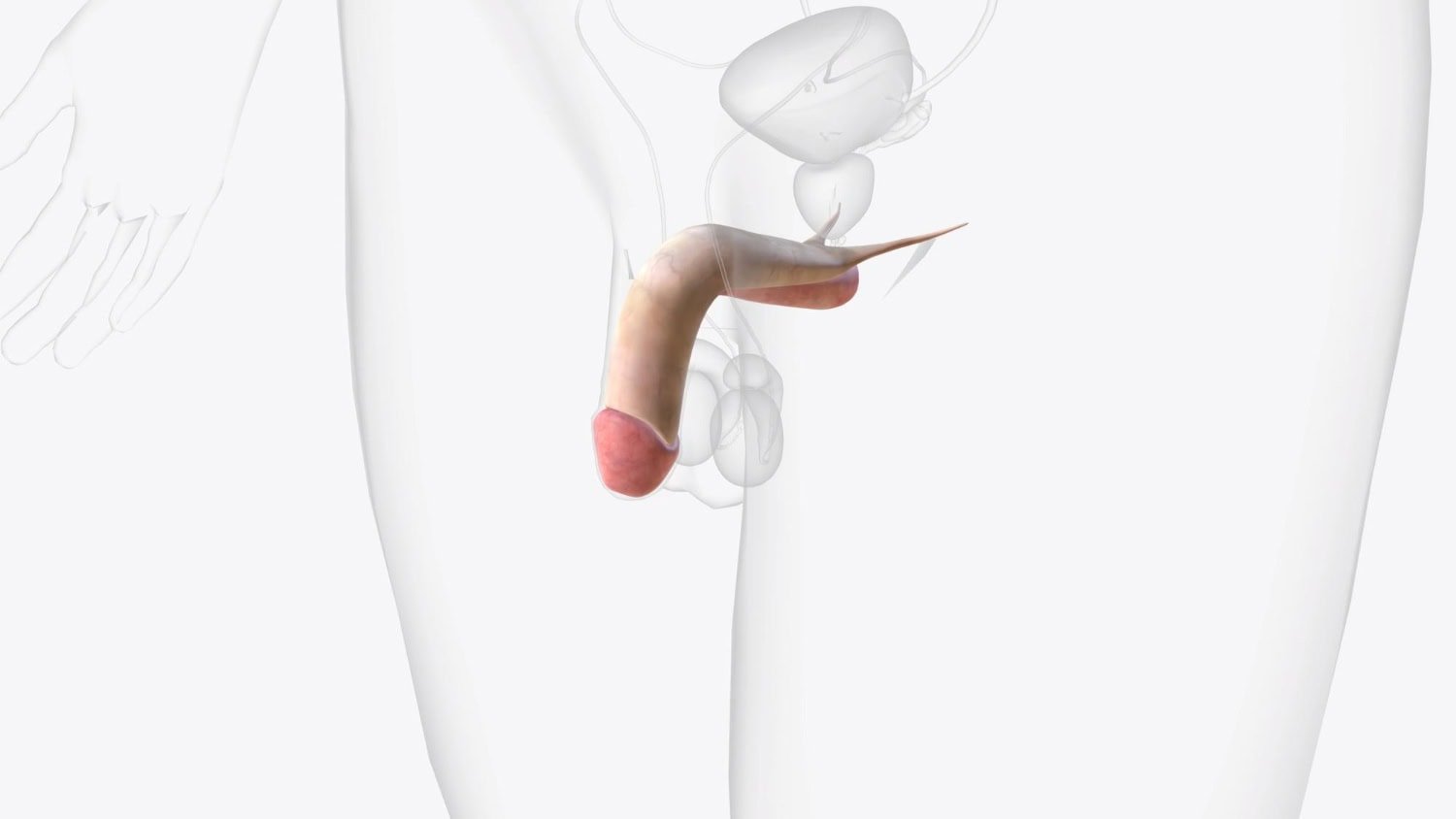Penile curvature, often due to Peyronie’s disease, is an issue that goes beyond aesthetics: it can cause pain, erectile dysfunction, and relationship anxiety. Understanding how to get rid of curvature means learning the pathological mechanisms, distinguishing reliable treatment options from DIY solutions, and choosing the most suitable path with a trusted specialist. Prof. Fabio Castiglione, internationally renowned urologist-andrologist, offers personalized protocols that integrate regenerative techniques, mechanical devices, and—only if strictly necessary—minimally invasive surgery.
How to get rid of curvature when it becomes a problem!
Penile curvature can be:
- Congenital: present from birth due to asymmetric development of penile structures.
- Acquired: related to the formation of fibrous plaques (Peyronie’s disease) that stiffen one side of the tunica albuginea.
Key symptoms include:
- Visible curvature during erection
- Pain in the initial inflammatory phase
- Penetration difficulties or inability to have intercourse
- Erectile dysfunction due to pain or performance anxiety
Curvature rarely resolves spontaneously. Only mild forms (< 20°) may stabilize on their own. When the penis deviates over 30° or sexual quality of life deteriorates, early intervention can prevent plaque progression and further shortening of the shaft.
Guidelines for deciding when to treat
Stage of disease
- Active phase: pain and rapid progression ⇒ anti-inflammatory and regenerative treatments.
- Chronic phase: stable curvature ≥ 12 months ⇒ shockwaves, traction, PRP or selective surgery.
Angular severity
- < 30°: supervised exercises, vacuum, RestoreX.
- 30–60°: combinations of P-Shocks®, PRP, and traction.
- 60°: possible surgery (graft or plication) or prosthesis if severe erectile dysfunction coexists.
Residual erectile function
- Preserved: focus on conservative therapies.
- Compromised: evaluate curvature correction and rigidity restoration simultaneously (hydraulic prosthesis).
Patient goals
Some men prefer non-surgical options; others seek immediate results even at the cost of more invasive procedures. Targeted counselling reduces unrealistic expectations.
Non-surgical treatments to get rid of curvature

Prof. Castiglione’s P-Shocks®
P-Shocks® combines:
- Low-intensity shockwaves (LI-ESWT), improving microvascularization and partially breaking the plaque
- PRP (Platelet-Rich Plasma), autologous injections of growth factors to reduce inflammation and promote elastic remodeling
- Medical vacuum pump used daily for 10–15 minutes: gradually stretches tissues and maintains cavernous oxygenation
Documented benefits
- Average curvature reduction of 35–45% in 4–6 sessions
- Pain almost eliminated after the second session
- Improvement in IIEF-5 score by 6–8 points
- No anesthesia or prolonged recovery times
Targeted intralesional injections
- Verapamil, a calcium channel blocker that reduces fibroblast density; administered in 6–12 weekly cycles.
- Collagenase Clostridium histolyticum (Xiaflex®), the only FDA-approved drug for curves > 30°, but available in the UK only at selected private centers.
Safety note: only experienced urologists should perform these injections to avoid complications such as extensive bruising or inadequate plaque fragmentation.
Traction and vacuum devices
- RestoreX (validated by the University of Minnesota) applies adjustable traction for 30 minutes/day, angling toward correction; studies show reduction up to 20° in six months and length gain > 1 cm
- Vacuum constriction device, creates negative pressure, induces passive erections useful for “vascular stretching” and improves tunica flexibility
Recommended protocol
Chronic cases with curvature ≤ 45°: 12 weeks of RestoreX + 6 LI-ESWT sessions + monthly PRP.
Surgical interventions: when and what to choose

Plication (Nesbit technique and variants)
Corrects moderate curves by shortening the convex side
- Advantage: quick procedure (60 min) as day surgery
- Disadvantage: average shortening of 1–2 cm
Incision/Excision with graft
Removes plaque and inserts autologous or bovine graft
- Maintains length but requires more advanced microsurgical skill
- Postoperative erectile dysfunction risk: 10–15%
Hydraulic penile prosthesis
Gold standard when curvature coexists with insufficient rigidity. Cylinders stretch the tunica, and intraoperative modeling is performed. Device lifespan: 10–15 years
Prof. Castiglione’s surgical pathway
- 3D ultrasound pre-op assessment
- Regional anesthesia and discharge within 24 hours
- Follow-up at 1, 3, 6 months with guided penile kinesitherapy if needed
How to get rid of curvature? Discover P-Shocks® and other personalized treatments: contact Prof. Castiglione at +447830398165.
Penile exercises and physiotherapy: do they really help?
 Many searches (“Peyronie’s disease exercises”) suggest manual stretching or yoga for curvature; however, unsupervised exercises risk repeated micro-trauma. Prof. Castiglione offers only supervised programs:
Many searches (“Peyronie’s disease exercises”) suggest manual stretching or yoga for curvature; however, unsupervised exercises risk repeated micro-trauma. Prof. Castiglione offers only supervised programs:
- Stretch-hold-release sessions with physiotherapist
- Integration with biofeedback to reduce anxiety
- Use of RestoreX or Penimaster PRO with graduated protocols of 600–900 g force
Avoiding improvised online tutorials is crucial to prevent worsening the plaque.
Results timeline: what to expect
P-Shocks®
- Benefits begin: around 3–4 weeks after starting the protocol
- Curvature reduction: on average 35–45%
Total duration: 6 to 8 weeks
RestoreX
- Benefits begin: after 4–6 weeks of consistent use
- Curvature reduction: approximately 15–25%
- Total duration: 3 to 6 months, based on deviation severity and adherence
Verapamil injections
- Benefits begin: typically within 6–8 weeks from the first injection
- Curvature reduction: roughly 10–20%
- Total duration: about 3 months, with regular sessions
Collagenase (Xiaflex®)
- Benefits begin: within 24–48 hours after completing the injection cycle
- Curvature reduction: on average 30–40%
- Total duration: about 8 weeks, including remodeling sessions
Corrective surgery
- Benefits begin: immediate straightening effect post-surgery
- Curvature reduction: over 90%, up to 100% in properly selected cases
- Recovery duration: functional healing in 4–6 weeks, with targeted follow-up
How to eliminate or reduce curvature safely: Prof. Castiglione’s 5 rules
- Initial dynamic ultrasound evaluation is essential to map plaques and vessels
- Act within the first year to reduce the risk of irreversible calcifications
- Avoid uncertified low-cost devices, which can cause edema and hematomas
- Integrate a healthy lifestyle: stop smoking, control blood sugar, Mediterranean diet
- Follow structured follow-up: angular measurements and IIEF every 3 months for 1 year
FAQ – Frequently asked questions
 Is congenital curvature treated with the same methods as Peyronie’s?
Is congenital curvature treated with the same methods as Peyronie’s?
- No, in young patients, plication is often the most effective option; shockwaves and PRP don’t play a primary role.
Can I combine vacuum device and shockwaves?
- Yes, daily use of vacuum enhances the regenerative effect of LI-ESWT and prevents shortening.
How long do P-Shocks® results last?
- In over 90% of cases, benefits remain stable at 24 months, especially if controlled traction is continued.
Are “jelqing” exercises helpful?
- No, jelqing is not recommended: it can further damage the tunica albuginea.
Is the treatment painful?
- Shockwaves cause mild discomfort; PRP is performed under local anesthesia. Post-procedure pain is minimal.
Conclusion
Being aware of how to address curvature means choosing a therapeutic path based on clinical evidence, personalized and monitored by an expert. Prof. Fabio Castiglione integrates cutting-edge techniques, P-Shocks®, PRP, controlled traction, and minimally invasive surgery only when strictly necessary, ensuring patients the highest standards of safety and efficacy. Don’t let curvature impact your sex life. Contact a center of excellence and regain confidence, performance, and peace of mind.
How to get rid of curvature? Talk today with Prof. Fabio Castiglione: call +447830398165.


